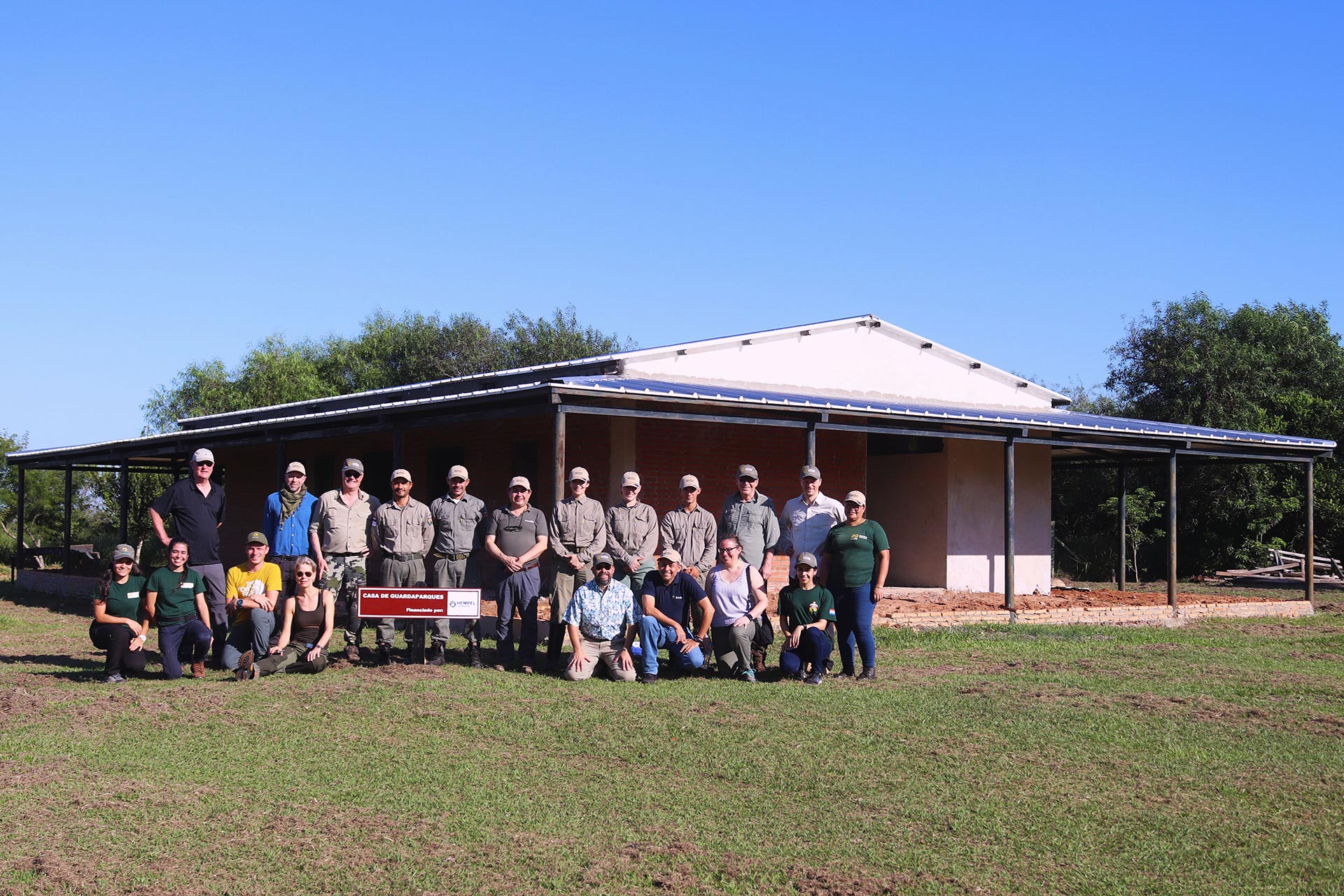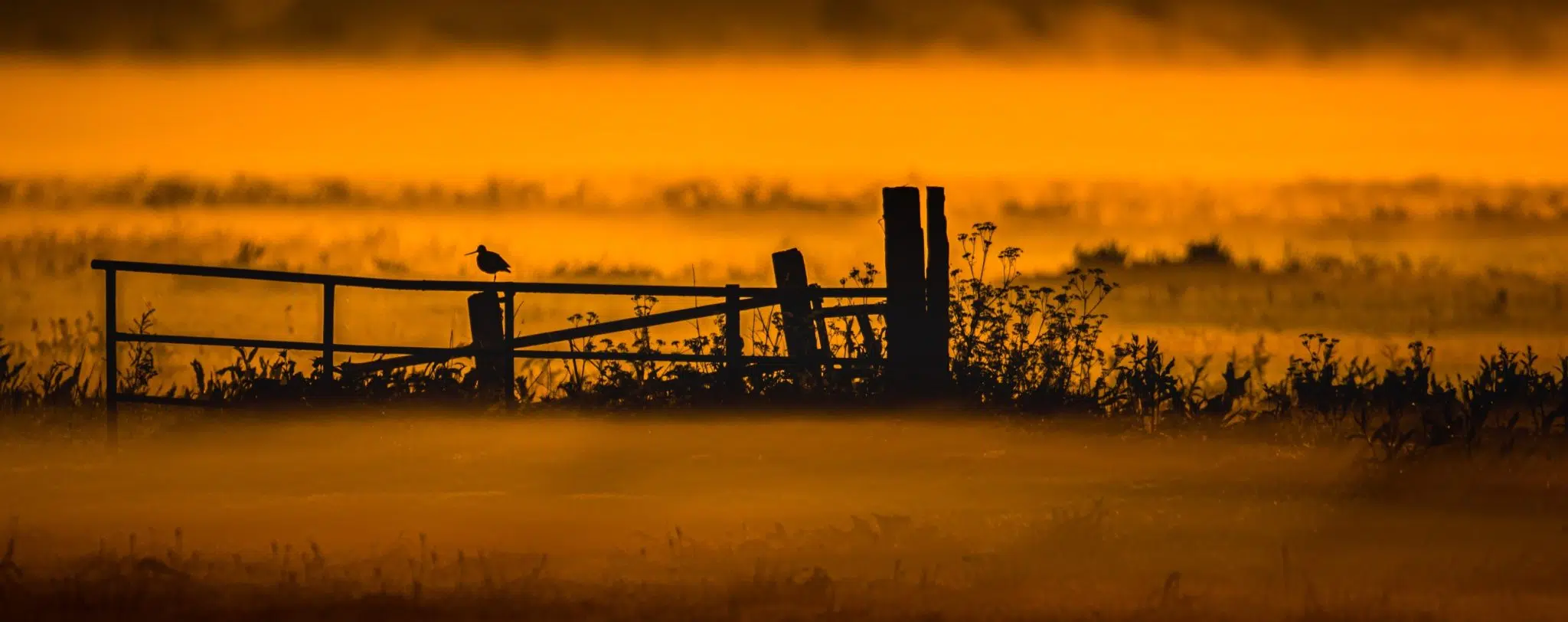Grey-breasted Parakeet recovers from three fledglings to a thousand
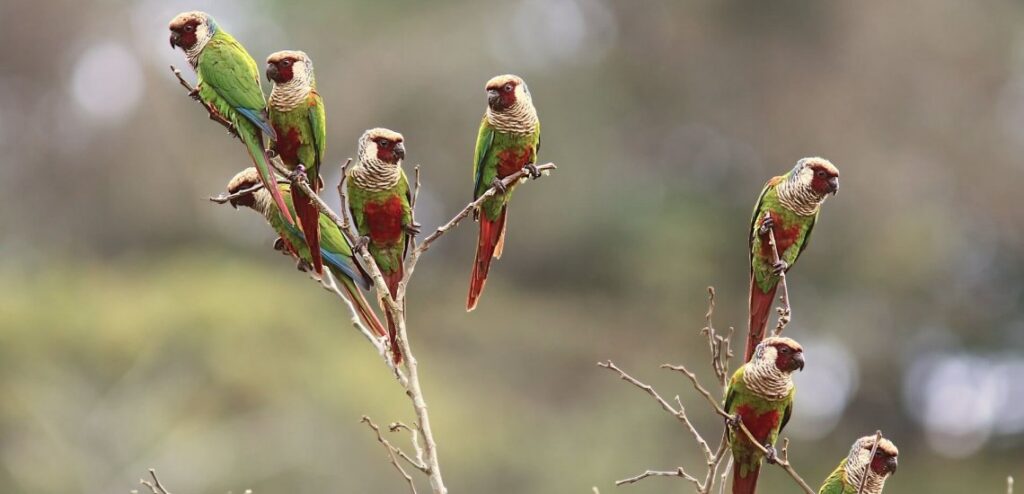
In 2012, researchers made the alarming discovery that this vivacious parakeet was now confined to a single small region in north-eastern Brazil. Find out how their campaign has seen the birds make a remarkable comeback from three fledglings in 2010 to a cumulative total of 1,165 fledglings.
In 2012, researchers made the alarming discovery that this vivacious parakeet was now confined to a single small region in north-eastern Brazil. Find out how their campaign has seen the birds make a remarkable comeback from three fledglings in 2010 to a cumulative total of 1,165 fledglings.

The Grey-breasted Parakeet Pyrrhura griseipectus (Endangered) was once widespread throughout the Atlantic Forest areas of north-eastern Brazil. However, ten years ago this flamboyantly feathered bird was facing a bleak future. Deforestation, illegal hunting and poaching by wildlife traffickers had caused severe population declines and local extinctions in at least 15 areas where it had historically been found.
In a quest to uncover the true range of the species, a 2012 project funded by the Conservation Leadership Programme and led by Fábio Nunes carried out surveys over 4,000 kilometres of forest roads and trails and about 100 interviews with local residents in Ceará State. With the exception of the discovery of one small remnant population, they found no evidence of the Grey-breasted Parakeet.
The results confirmed that the last remaining population was restricted to only two adjacent areas in the Baturité Mountains, with 80% of the birds found in just one of these sites. “These parakeets were facing a number of threats, including a highly restricted range, very little remaining habitat, few available nesting sites, and pressure from poachers seeking to snatch the chicks for the pet trade,” explains Fábio.
The alarming discovery ignited renewed efforts to save grey-breasted parakeets from extinction. It sparked a government-led Conservation Action Plan for the species, and an international partnership between three NGOs (AQUASIS in Brazil, Loro Parque Fondación in Spain and ZGAP in Germany) went on to support Fábio’s next goal: to create the safe home that these birds so desperately needed.
Crucial in helping the parakeets recover was the provision of artificial nest boxes where they could breed in peace while being protected from poachers. In 2010, the team designed the boxes to mimic the parakeets’ natural nests, such as the depth, opening size and position. This seemed to do the trick—the parakeets have been successfully breeding in them ever since.
By Kate Tointon
This article first appeared on the Conservation Leadership Programme website.
“These parakeets were facing a number of threats, including a highly restricted range, very little remaining habitat, few available nesting sites, and pressure from poachers seeking to snatch the chicks for the pet trade,”
Fábio Nunes
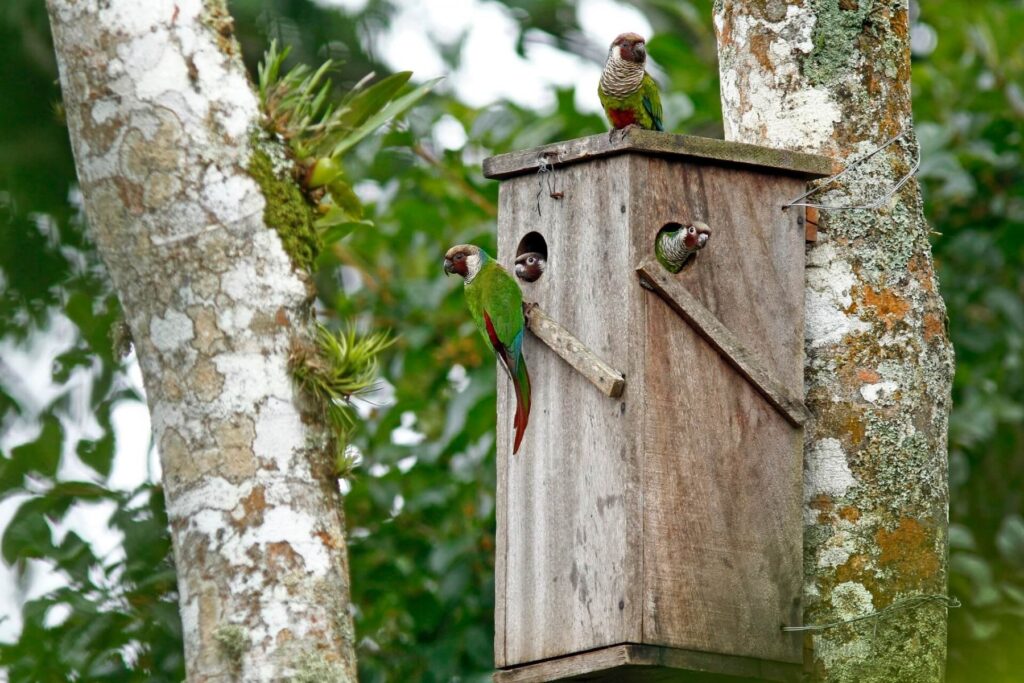
Another vital transformation happened among the local communities that live alongside the parakeets. The team formed partnerships with local residents who agreed to help them monitor the artificial nests on their properties and provide a round-the-clock watch against poachers. The team also formed Private Protected Areas and the Grey-Breasted Parakeet Wildlife Refuge (Refúgio de Vida Silvestre Periquito Cara-suja) to provide enhanced protection not just for grey-breasted parakeets but also for other endangered birds in the region.
The team’s strategy has resulted in an extraordinary turnaround for grey-breasted parakeets. Just three fledglings had been recorded in 2010 when the first 30 nest boxes were installed. Since then, the number of successful fledglings has been steadily increasing each year, and the team has placed 70 more nest boxes to keep up with the growing demand. In a landmark achievement for the project, last year the cumulative total number of fledglings reached 1,165—an increase of about 130 fledglings each year, on average. Based on the growing population trend, in 2017 BirdLife reclassified the Grey-breasted Parakeets from Critically Endangered to Endangered on the IUCN Red List of Threatened Species.
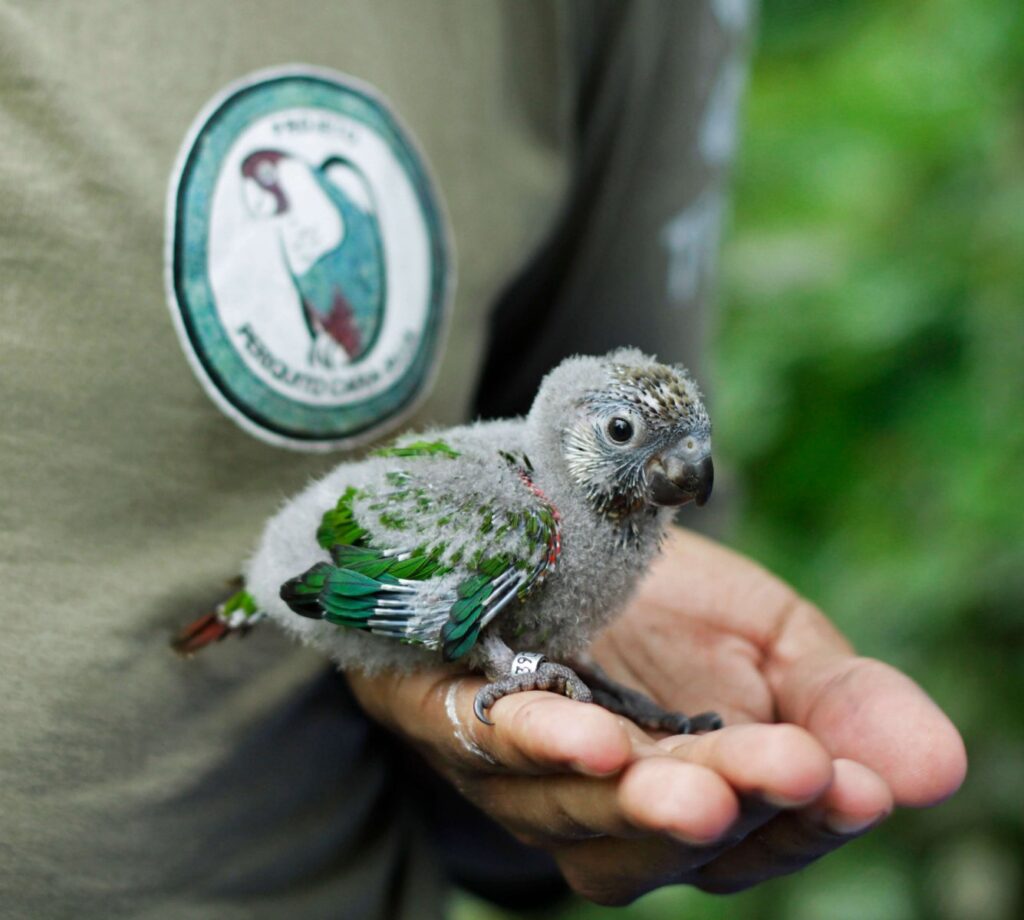
New scientific insights from the project and the team’s involvement in the development of management plans and legislation will be critical in the future conservation of this exuberant parrot. However, according to Fabio, one key challenge in securing the safety of the species is to protect its forest habitat.
“Our dream is to bring the species back to the areas where it should never have disappeared and diversify the gene pool of wild populations,” says Fábio.
His plan, developed with his team, is to create more protected habitats, recover degraded forests, and ensure the parakeets can eventually survive without nest boxes—and ultimately use what he has learned from this incredible success story to help other endangered species in Brazil.
The Conservation Leadership Programme is a partnership between Fauna & Flora International, BirdLife and WCS. Together, we direct project funding and training to early career leaders from developing countries who are tackling priority conservation challenges.
Stay up to date
Sign up to receive the latest bird conservation news. You’ll also receive updates about our projects, science and other ways to get involved including fundraising.
Thank you for your support, we are committed to protecting your personal information and privacy. For more information on how we use your data, please see our Privacy Policy. You can unsubscribe from emails at any time by using the link in the footer of any email from us.


